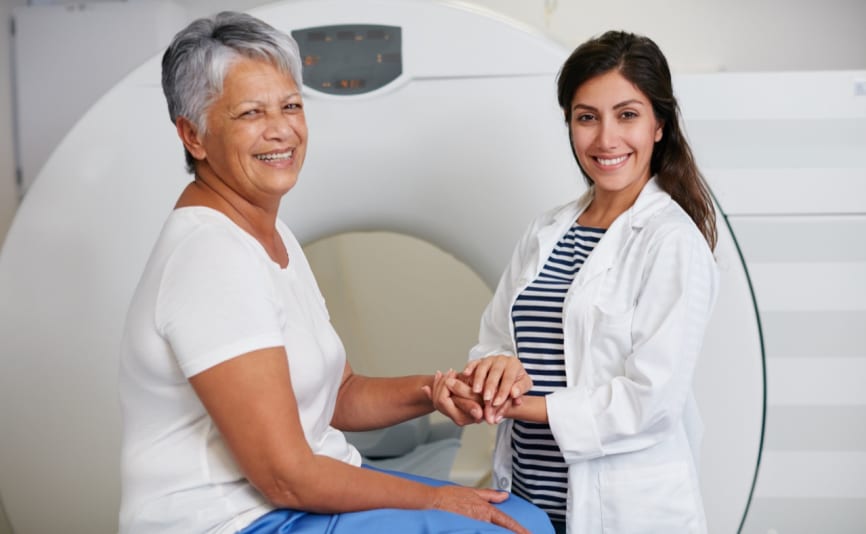Tennis elbow, also known as lateral epicondylitis, is a common condition that causes pain on the outer part of the elbow. This pain is usually caused by repetitive arm movements and is often associated with playing tennis or other racquet sports. In this article, we will explore the signs, symptoms, causes, and treatment options for tennis elbow.
What are the symptoms and signs of tennis elbow?
The symptoms of tennis elbow include pain and tenderness on the outside of the elbow. This pain may also radiate down the forearm and may worsen with certain movements, such as gripping small objects or twisting movements. In some cases, the pain may be severe enough to make it difficult to perform even simple tasks, such as turning a doorknob or holding a coffee cup.
What is the main cause of tennis elbow?
Tennis elbow is caused by repeated stress to the forearm muscles and tendons that attach to the lateral epicondyle, which is the bony bump on the outer part of the elbow. This repeated stress can cause tiny tears in the tendons that eventually lead to the development of scar tissue. This scar tissue can reduce blood flow to the affected area and cause pain and stiffness.
What triggers tennis elbow?
Tennis elbow can be triggered by any repetitive movement of the wrist and arm muscles. This can include playing tennis or other racquet sports, such as squash or badminton, but it can also be caused by other activities that involve repetitive movements of the arms, such as painting, typing, or using a screwdriver. Poor technique when performing these activities can also increase the risk of developing tennis elbow.
Some people get what is called golfer's elbow, where pain is usually felt on the inside of the elbow joint, which differs from the pain of the outer elbow associated with tennis elbow.
How is tennis elbow diagnosed?
If you are experiencing symptoms of tennis elbow, your doctor will typically assess your medical history, and perform a physical exam to check for tenderness and pain in the affected area. In some cases, imaging tests such as MRI (magnetic resonance imaging) or ultrasound may be recommended to help confirm the diagnosis and rule out other conditions that can cause similar symptoms.
Ultrasound would usually be the first port of call for tennis elbow, as it can show the bowing of the tendon, the presence of fluid, and the thickening of the tendon. It uses sound waves to generate images of soft tissues. Ultrasound scans can also be carried out while the joint is in motion, meaning your healthcare professional can assess how the elbow joint is performing and any point that makes the pain worse.
MRI is more sensitive than ultrasound for diagnosing epicondylitis, so it may be offered if the ultrasound results are normal to further investigate the patient's symptoms of tennis elbow.
Anatomy of the elbow joint and forearm muscles
The elbow joint is a complex joint that connects the upper arm bone, humerus, to the two forearm bones, radius and ulna. The forearm muscles and tendons are responsible for the movement of the wrist and fingers, and many of these originate from the lateral epicondyle of the humerus - a bony bump located on the outer elbow.
When the wrist muscles and forearm are overused, especially the extensor carpi radialis brevis muscle, it can cause microscopic tears in the tendon where it attaches to the lateral epicondyle. Overuse can include repetition of the same motions, such as a backhand stroke in tennis or another racquet sport. You might feel pain as a result of these tears and inflammation, which is also known as tennis elbow.
Can tennis elbow heal on its own?
In many cases, tennis elbow symptoms improve, and the condition will heal on its own with rest and conservative treatments. These treatments may include applying a cold compress, such as frozen peas wrapped in a towel, to the affected area to reduce inflammation and manage pain. You can also take over-the-counter pain medications, wear a counterforce brace, and perform stretching exercises to help improve flexibility and reduce stiffness. Physical therapists may also be able to recommend exercises and treatments to help reduce pain and improve function.
Will tennis elbow go away? How to fix tennis elbow
If conservative treatments do not provide relief, more aggressive treatment options may be recommended. These may include steroid injections to help reduce inflammation and pain, extracorporeal shock wave therapy to help stimulate blood flow to the affected area, or tennis elbow surgery to remove damaged tissue and repair any tears in the tendons. Orthopaedic surgeons offer surgery to treat tennis elbow. Muscle-stimulating techniques may also be used to help reduce pain and improve muscle function.
Is it possible to prevent tennis elbow?
The best way to prevent tennis elbow is to avoid repetitive arm movements that can cause stress on the forearm muscles and tendons. If you play tennis or other racquet sports, make sure to use proper technique and equipment to reduce the risk of developing tennis elbow. If you do experience symptoms of tennis elbow, seek treatment early to prevent the condition from becoming chronic.
Conclusion
Tennis elbow is a painful condition that can be caused by repetitive arm movements. While it can be a frustrating condition to deal with, there are many effective treatment options available to help reduce pain and improve function, such as rest, stretching, physiotherapy or more invasive treatments such as surgery or a steroid injection. By taking steps to prevent tennis elbow and seeking treatment early, you can reduce your risk of developing this painful condition and improve your quality of life.
Next steps
- Book your elbow ultrasound or elbow MRI to discover whether you have tennis elbow
- Visit our news page to learn more about diagnostic imaging
Sources used
https://pubmed.ncbi.nlm.nih.gov/11981928/
https://orthoinfo.aaos.org/en/diseases--conditions/tennis-elbow-lateral-epicondylitis/
https://www.nhs.uk/conditions/tennis-elbow/
https://www.physio-pedia.com/Lateral_Epicondylitis
https://www.hopkinsmedicine.org/health/conditions-and-diseases/lateral-epicondylitis-tennis-elbow

